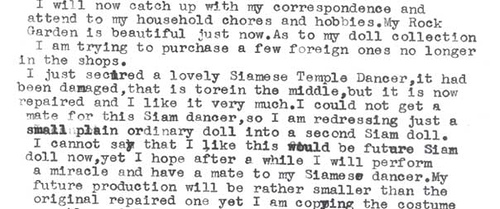Identities assumed by virtuoso impostor Stanley Clifford Weyman (1890-1960):
- U.S. consul representative to Morocco. Arrested for fraud.
- Military attaché from Serbia and U.S. Navy lieutenant (so the two could use each other as references).
- “Lt. Cmdr. Ethan Allen Weinberg, consul general for Romania.” He inspected the U.S.S. Wyoming and invited its officers to a dinner at the Astor Hotel. On being arrested, he was heard to complain that they should have waited until dessert.
- “Royal St. Cyr,” a lieutenant in the U.S. Army Air Corps. Arrested on an inspection tour of the Brooklyn armory.
- Company doctor in Lima, Peru. Threw parties until arrested.
- State Department naval liaison officer. Introduced himself to Princess Fatima of Afghanistan and promised to arrange a meeting with the president. She gave him $10,000 for “presents” to State Department officials. Weyman got appointments with Secretary of State Evans Hughes and with Warren G. Harding. Indicted for impersonating a naval officer.
- U.S. secretary of state. Interviewed Queen Marie of Romania for the Evening Graphic newspaper.
- Personal physician to Pola Negri, Rudolph Valentino’s grieving lover. Established a faith-healing clinic and issued regular press releases.
- Arrested during World War II for telling draft dodgers how to feign various medical conditions.
- Journalist for the United Nations. Caught when he asked the State Department whether he could remain a U.S. citizen if he became the Thai delegation’s press officer.
Ironically, Weyman’s most honest act may have been his last: He was shot trying to stop a robbery in a New York hotel. “One man’s life is a boring thing,” he once said. “I lived many lives. I’m never bored.”



